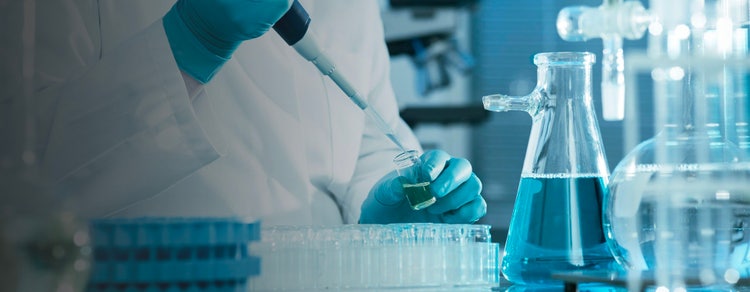
Drug Discovery and Development
Biology and technology to advance drug discovery
Our technology maximizes throughput and reproducibility to give researchers more answers and greater insights faster
For every drug that makes it to the finish line, another nine don’t succeed. This alarming failure rate can be traced to reliance on 2D cell cultures that don’t closely mimic complex human biology, often leading to inaccurate predictions of a drug’s potential and extended drug development timelines.
The drug discovery landscape is shifting, with more scientists centering cell line development, disease models, and high-throughput screening methods around physiologically-relevant 3D cell models. The reason for this is clear: Using cellular model systems in research that closely mimic patient disease states or human organs can bring life-saving therapeutics to market – faster.
Our Organoid Innovation Center was envisioned as a lab of the future—a collaborative space where automated cell line development and 3D biology workflows unite, enabling customers and industry partners to scale drug discovery research with a high-throughput screening solution.
The importance of high-throughput screening during the early drug discovery process
High Throughput Screening (HTS) involves testing a compound library set against a biological target. Screening involves replicating 1000s of biochemical reactions to test 100,000s of drug compound targets systemically using a wide range of concentrations. HTS scientists are determining what range of concentration will inhibit or promote a desired outcome without causing toxic effects to the animal model. A variety of biochemical, cellular, and ion channel assays are performed to determine the efficacy of a particular compound. The biochemical reactions that are investigated include protein activity, binding efficiency, cellular toxicity or phenotypic changes as well as cell signaling readouts.
HTS is a time-consuming process. It requires evaluating several scientific parameters—all of which are critical to ensure candidate drugs advance down the pipeline. It is also a costly process, so any ability to optimize the throughput and scale in terms of volume or number of tests done per day is critical to accelerating time to market or next stage evaluation.
Automated, end-to-end solution for 3D biology workflows
Drug discovery relies heavily on high-throughput assays with a relevant window for measuring the effects of candidate drugs. 3D cell models, are expected to revolutionize the output from early drug discovery which can potentially result in better qualified early selection of lead candidates and, subsequently, improved R&D productivity.
Molecular Devices integrates microplate readers, high-content imaging systems, clone picking technologies, and advanced analysis software with lab automation—including robotics, incubation, and liquid handling—to drive better experiments, allow researchers to easily mine complex data for insights, and help shape the future of drug discovery.

Featured research topics to optimize your drug discovery and development process
Our integrated hardware and software solutions enable automated workflows – from start to finish – for any research application. Whether the focus is cell line development, 3D biology, or drug screening – our technology maximizes throughput and reproducibility to give researchers more answers and greater insights faster.